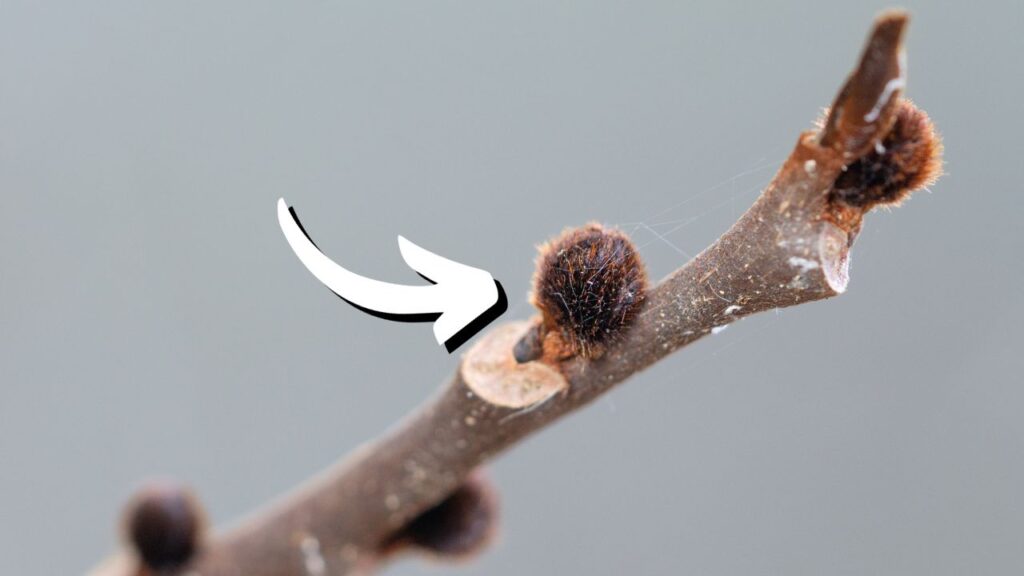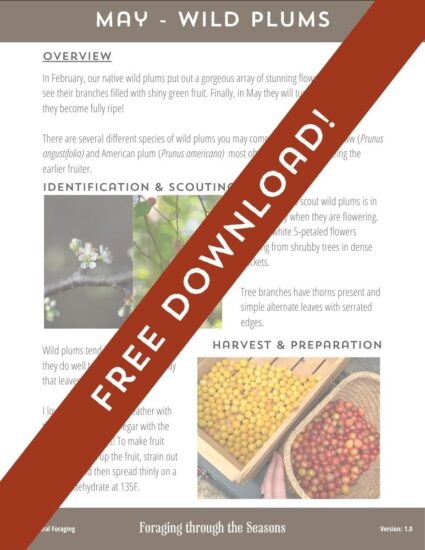I am going to show you how to scout and identify paw paw trees (Asimina triloba) that will bear fruit in the wintertime. This is one of the best ways to guarantee you’ll be able to find fruit during the actual paw paw foraging season.
Why you should look for Paw Paw in winter
There are several advantages to scouting for Paw Paw fruit trees in the winter.
- You don’t have to worry about your time being taken by any other harvest seasons
- It is easier to walk through forests and fields in the wintertime
- You can locate new spots well ahead of the fruiting season
Find Paw Paw fruit trees in the winter
Now that I have you convinced, here is the simple trick that you can use to effectively finding future fruiting locations in the winter!
Floral vs Vegetative buds
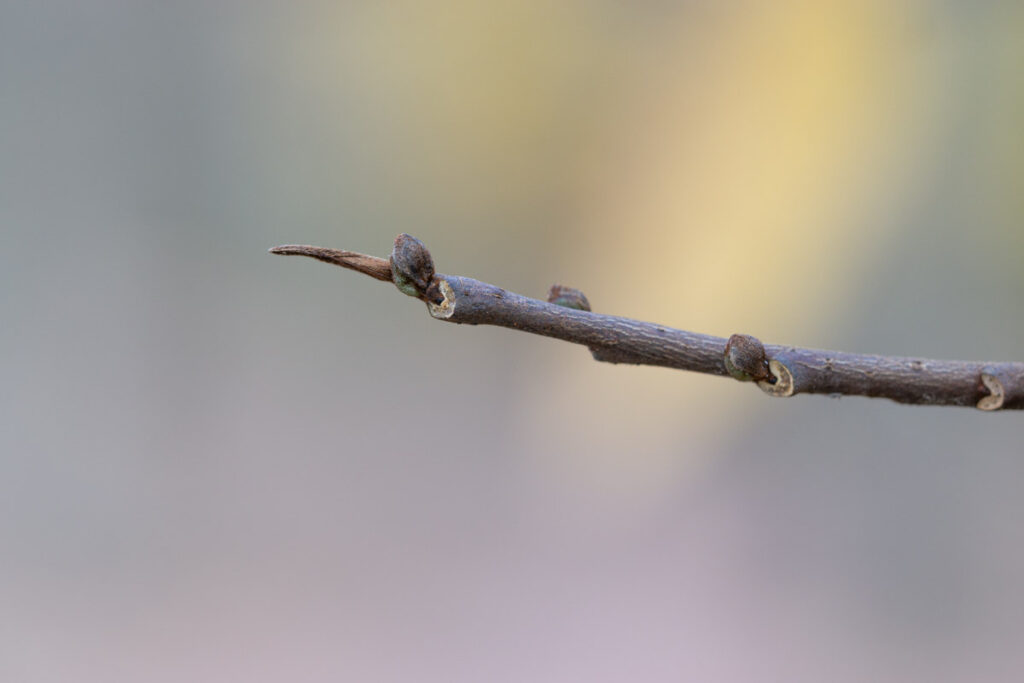
Paw paw has floral buds that are physically distinct from vegetative buds.
Floral buds:
- Circular
- Large
Vegetative buds:
- Narrow
- Smaller (than the floral buds)
Note that the end vegetative bud of paw paw will be larger than the ones on the side. This is because they have “true terminal buds.” This is discussed further in the identification section.
With this trick, you’ll now be able to distinguish Paw paw patches that may produce fruit from ones that definitely won’t by the presence of lack of floral buds in the patch.
The more floral buds, the better! Paw paw trees must have at least two individuals to produce fruit. One individual can be confused as multiple because paw paws reproduce clonally by runners.
Larger patches over a wider area also tend to fruit better.
Where to look for Paw Paw fruit trees?
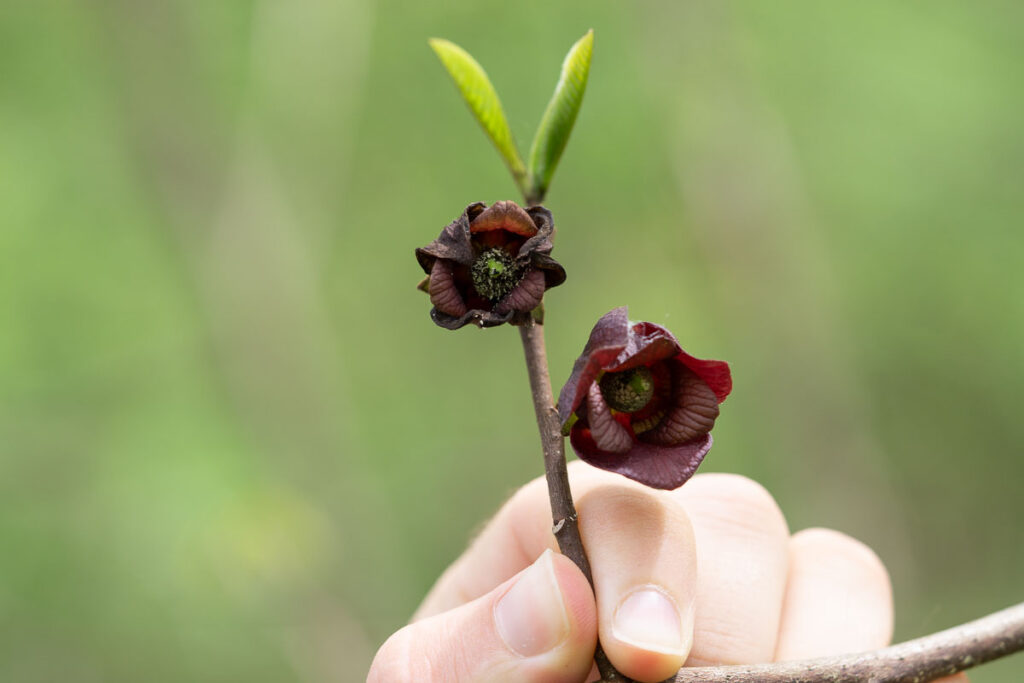
Now that you know what to look for, you need to know where to look. Paw paw trees are actually quite common in their native range. If you use the ID section, you may come across them more than you expect. However, many patches will likely lack floral buds.
So here is what I recommend: look near water.
Every single wild paw paw fruit that I have ever found while foraging has been from trees growing near water. This creates an ideal situation where the trees get ample sunlight and access to pollinators.
Identifying Paw Paw trees in winter
Here are the details you should look for when identifying paw paw in the winter:
- True terminal buds
- Buds are “naked” (without bud scales), and their color is beige to chocolate brown
- Bark smooth and gray
- Leaf scars partially wrap buds with multiple bundle scars
- Vegetative buds long and lance-like, distinct from floral buds which are round, nearly a sphere
Downloadable winter tree profile for Paw Paw

You can find even more details and photos in my winter tree profile for wild paw paw. It is part of a set of several different wild fruit trees that can be scouted in winter to increase your fruit harvest later in the foraging season!
You can also get your FREE preview of the set here.
Frequently Asked Questions
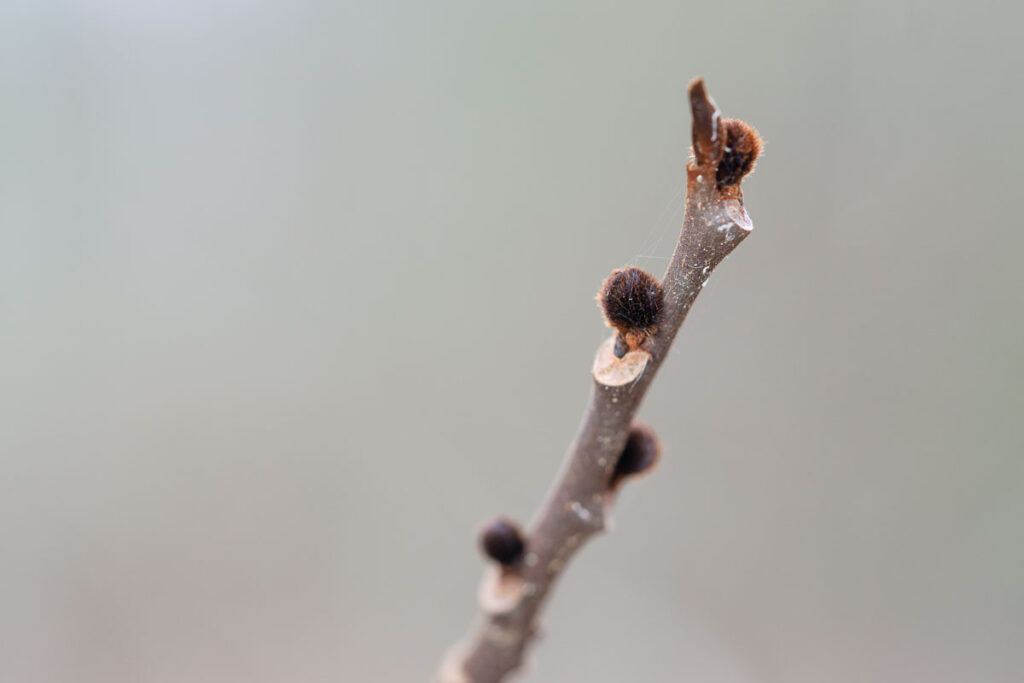
Q: Can paw paw trees survive winter?
A: Yes. Wild paw paws are adapted to their native range and can survive the winter without any issues. They grow best in USDA hardiness zones 5-8. Their native range is from Southern Michigan to Central Alabama and from East Texas to the Atlantic Coast.
Q: Is pawpaw frost tolerant?
A: Newly planted trees may be sensitive to frost, but established wild trees are frost tolerant.
Learning more
Paw paw is just one of many native fruit trees that can be found in the wild! You can read my article that covers over a dozen wild food plants, trees, and fungi!

